Abstract
There is growing concern over the detrimental health effects to firefighters produced by exposure to combustion byproducts of burning materials. To assess the types and levels of exposure encountered by firefighters during their routine occupational duties, members of the Buffalo Fire Department were monitored during firefighting activities with personal, portable, ambient environmental sampling devices. The results indicate that firefighters are frequently exposed to significant concentrations of hazardous materials including carbon monoxide, benzene, sulphur dioxide, hydrogen cyanide, aldehydes, hydrogen chloride, dichlorofluoromethane, and particulates. Furthermore, in many cases of the worst exposure to these materials respiratory protective equipment was not used owing to the visual impression of low smoke intensity, and thus these levels represent actual direct exposure of the firefighters. Many of these materials have been implicated in the production of cardiovascular, respiratory, or neoplastic diseases, which may provide an explanation for the alleged increased risk for these illnesses among firefighters.
Full text
PDF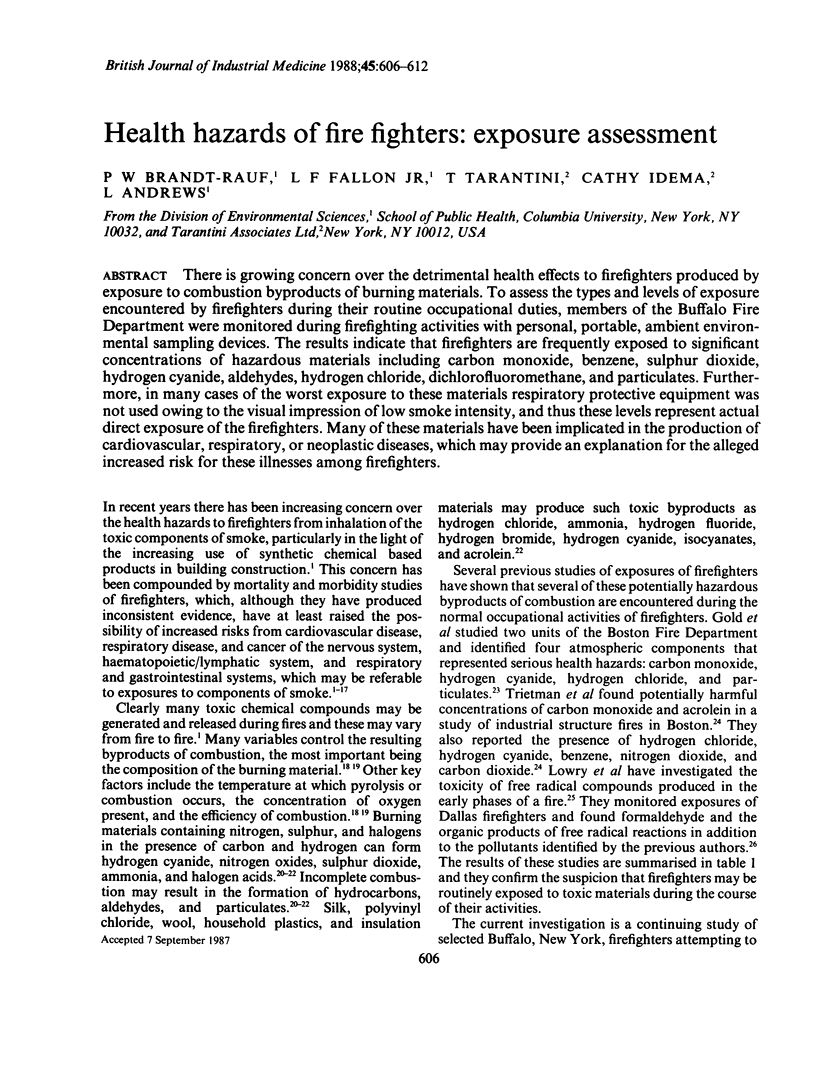
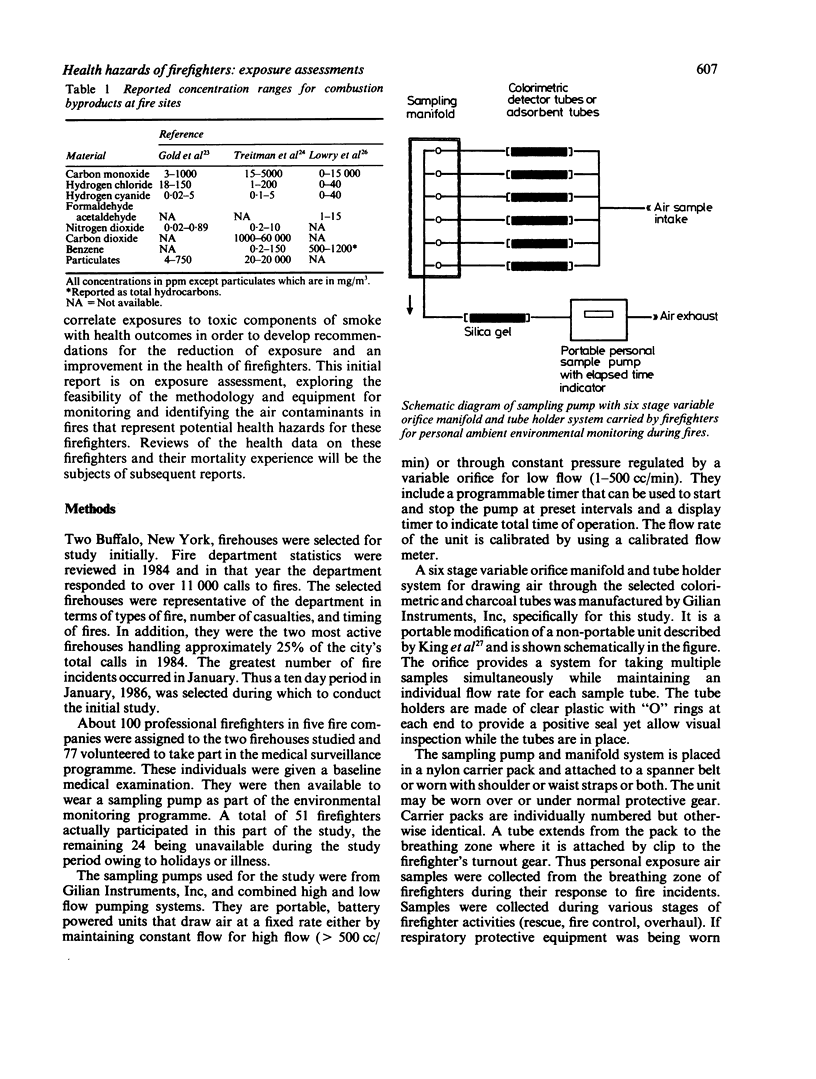
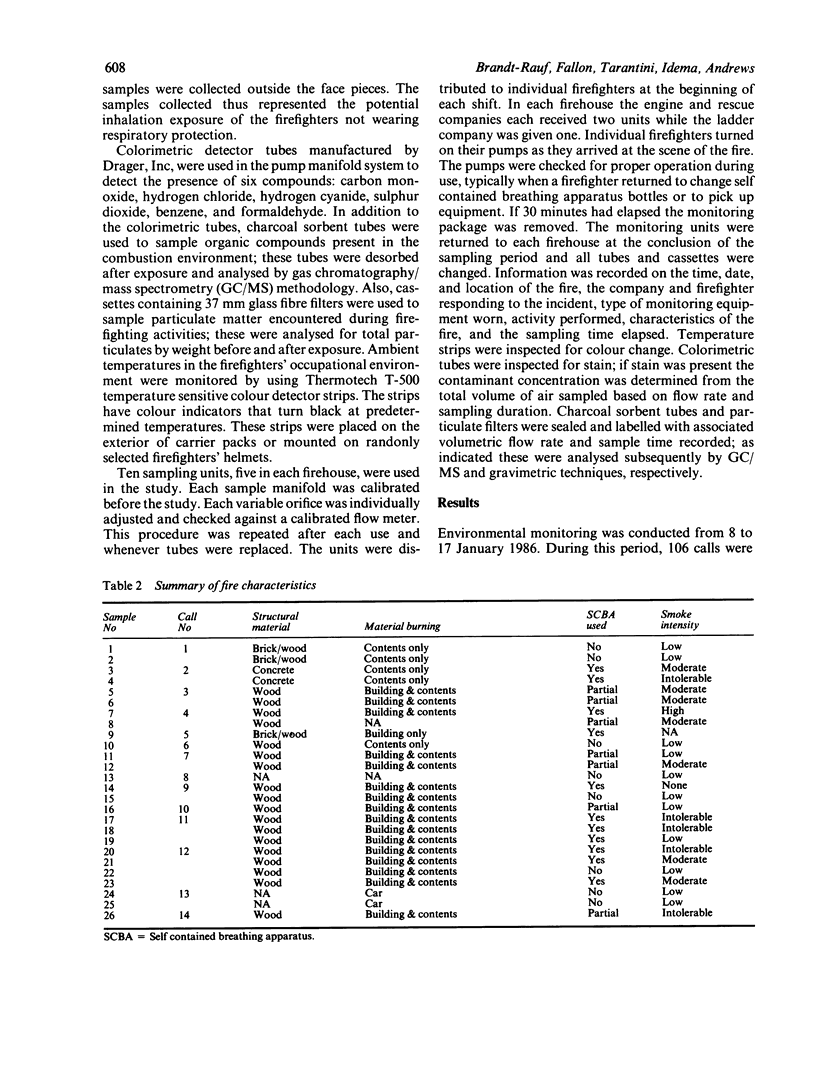
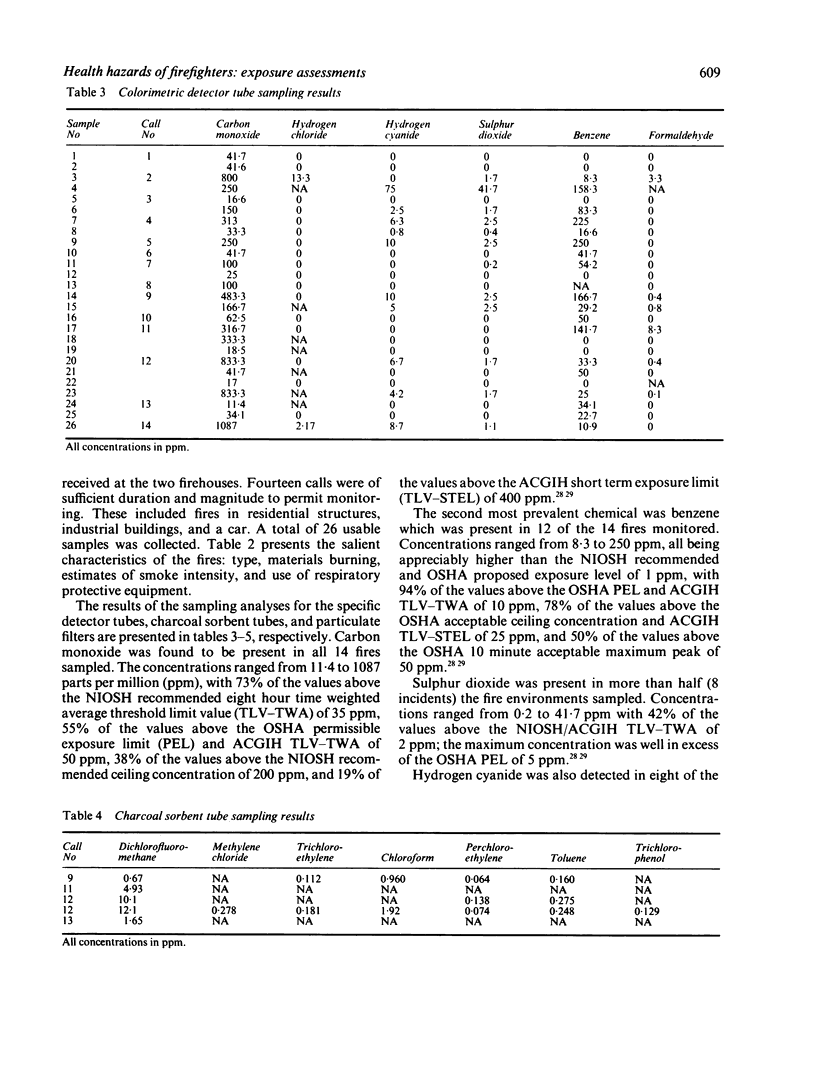
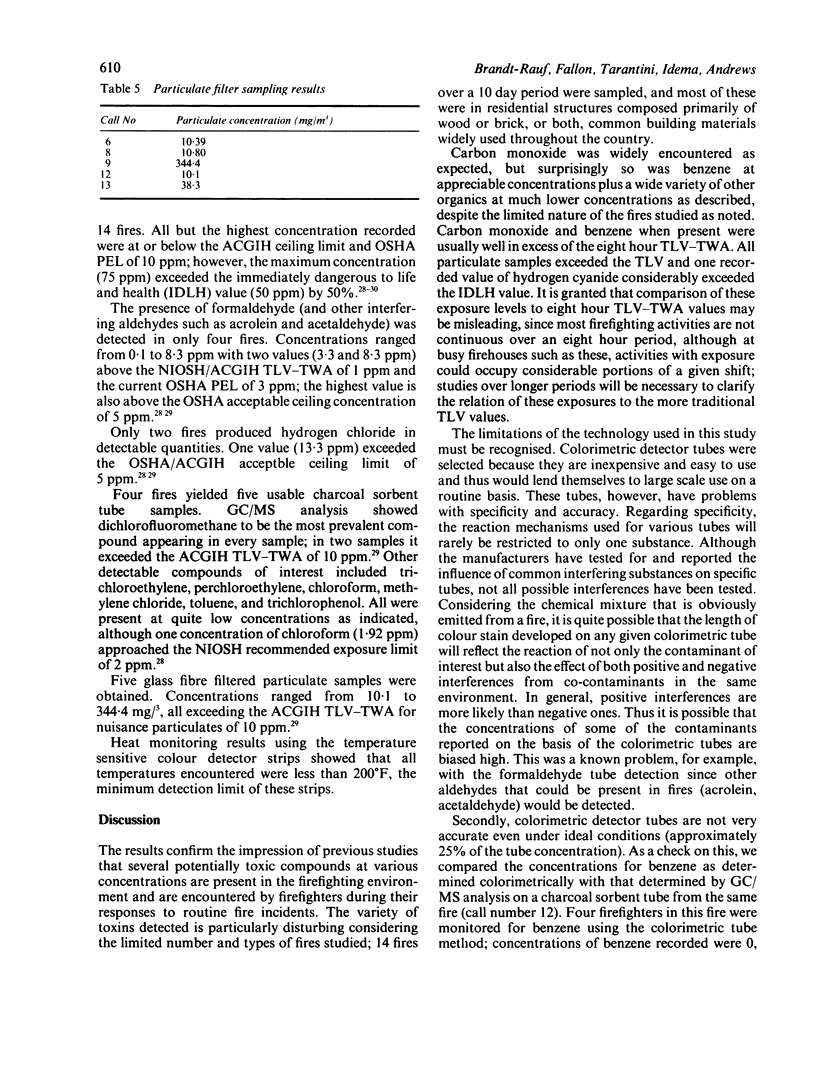
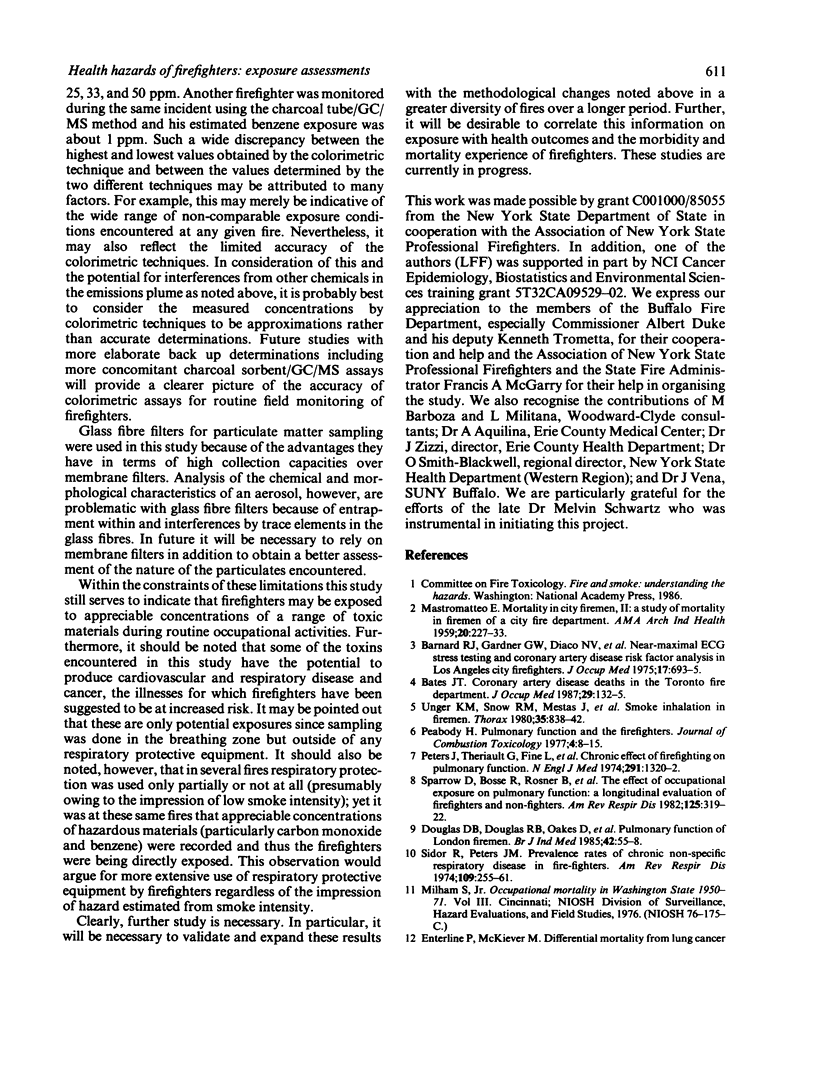
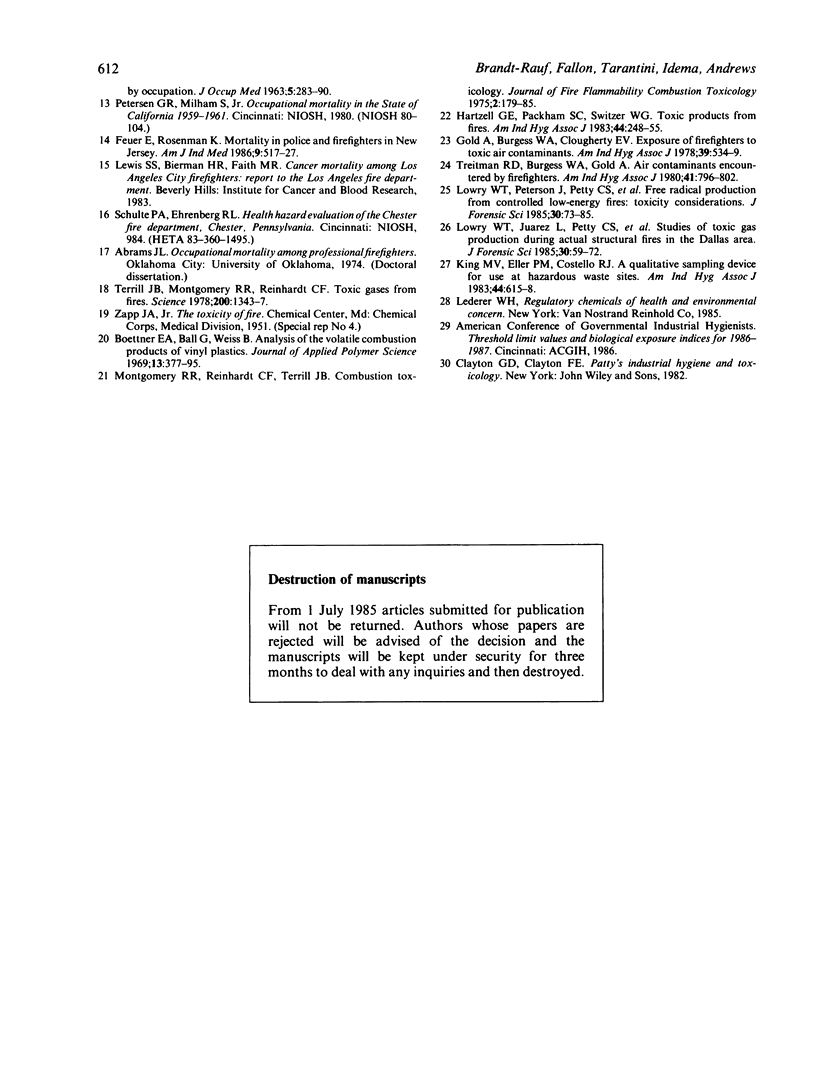
Selected References
These references are in PubMed. This may not be the complete list of references from this article.
- Barnard R. J., Gardner G. W., Diaco N. V., Kattus A. A. Near-maximal ECG stress testing and coronary artery disease risk factor analysis in Los Angeles City fire fighters. J Occup Med. 1975 Nov;17(11):693–695. [PubMed] [Google Scholar]
- Bates J. T. Coronary artery disease deaths in the Toronto Fire Department. J Occup Med. 1987 Feb;29(2):132–135. [PubMed] [Google Scholar]
- Douglas D. B., Douglas R. B., Oakes D., Scott G. Pulmonary function of London firemen. Br J Ind Med. 1985 Jan;42(1):55–58. doi: 10.1136/oem.42.1.55. [DOI] [PMC free article] [PubMed] [Google Scholar]
- Feuer E., Rosenman K. Mortality in police and firefighters in New Jersey. Am J Ind Med. 1986;9(6):517–527. doi: 10.1002/ajim.4700090603. [DOI] [PubMed] [Google Scholar]
- Gold A., Burgess W. A., Clougherty E. V. Exposure of firefighters to toxic air contaminants. Am Ind Hyg Assoc J. 1978 Jul;39(7):534–539. doi: 10.1080/0002889778507805. [DOI] [PubMed] [Google Scholar]
- Hartzell G. E., Packham S. C., Switzer W. G. Toxic products from fires. Am Ind Hyg Assoc J. 1983 Apr;44(4):248–255. doi: 10.1080/15298668391404743. [DOI] [PubMed] [Google Scholar]
- King M. V., Eller P. M., Costello R. J. A quantitative sampling device for use at hazardous waste sites. Am Ind Hyg Assoc J. 1983 Aug;44(8):615–618. doi: 10.1080/15298668391405427. [DOI] [PubMed] [Google Scholar]
- Lowry W. R., Peterson J., Petty C. S., Badgett J. L. Free radical production from controlled low-energy fires: toxicity considerations. J Forensic Sci. 1985 Jan;30(1):73–85. [PubMed] [Google Scholar]
- Lowry W. T., Juarez L., Petty C. S., Roberts B. Studies of toxic gas production during actual structural fires in the Dallas area. J Forensic Sci. 1985 Jan;30(1):59–72. [PubMed] [Google Scholar]
- MASTROMATTEO E. Mortality in city firemen. II. A study of mortality in firemen of a city fire department. AMA Arch Ind Health. 1959 Sep;20:227–233. [PubMed] [Google Scholar]
- Peters J. M., Theriault G. P., Fine L. J., Wegman D. H. Chronic effect of fire fighting on pulmonary function. N Engl J Med. 1974 Dec 19;291(25):1320–1322. doi: 10.1056/NEJM197412192912502. [DOI] [PubMed] [Google Scholar]
- Sidor R., Peters J. M. Prevalence rates of chronic non-specific respiratory disease in fire fighters. Am Rev Respir Dis. 1974 Feb;109(2):255–261. doi: 10.1164/arrd.1974.109.2.255. [DOI] [PubMed] [Google Scholar]
- Sparrow D., Bossé R., Rosner B., Weiss S. T. The effect of occupational exposure on pulmonary function: a longitudinal evaluation of fire fighters and nonfire fighters. Am Rev Respir Dis. 1982 Mar;125(3):319–322. doi: 10.1164/arrd.1982.125.3.319. [DOI] [PubMed] [Google Scholar]
- Terrill J. B., Montgomery R. R., Reinhardt C. F. Toxic gases from fires. Science. 1978 Jun 23;200(4348):1343–1347. doi: 10.1126/science.208143. [DOI] [PubMed] [Google Scholar]
- Treitman R. D., Burgess W. A., Gold A. Air contaminants encountered by firefighters. Am Ind Hyg Assoc J. 1980 Nov;41(11):796–802. doi: 10.1080/15298668091425662. [DOI] [PubMed] [Google Scholar]
- Unger K. M., Snow R. M., Mestas J. M., Miller W. C. Smoke inhalation in firemen. Thorax. 1980 Nov;35(11):838–842. doi: 10.1136/thx.35.11.838. [DOI] [PMC free article] [PubMed] [Google Scholar]


